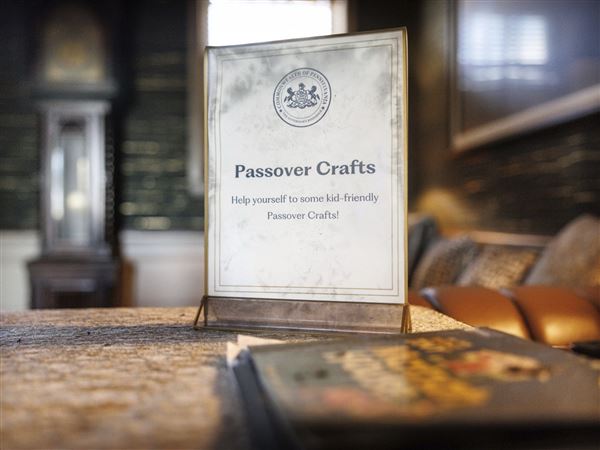In the 1920s, James Joyce, T.S. Eliot and William Faulkner were breaking away from the conventional linear forms that defined English literature, but hardly anybody was reading their jarringly new works. Instead, readers loved the familiar style of F. Scott Fitzgerald's short stories in popular magazines that brought him wealth and fame.
His novels fared poorly, however, including the 50,000-word "The Great Gatsby" that failed to find many readers and glowing reviews in 1925. It was out of print by 1940, the year he died at 44. Biographer Matthew J. Bruccoli said Fitzgerald believed he was a failure.
Salvaged by critic Edmund Wilson and praised by Lionel Trilling and Leslie Fiedler after World War II, "The Great Gatsby" today is read in high schools and colleges around the country. Half a million copies are sold every year, says "A New Literary History of America" (Belknap Press of Harvard University Press). The paperback (with Francis Cugat's original blue cover design) is No. 2 this week among top-selling books on Amazon.com. Four feature films, the latest opening today, directed by Baz Luhrmann, and one TV film were based on the book. The Pittsburgh Ballet Theatre premiered "Gatsby" here in 1987, and there's a 1999 opera composed by John Harbison.
If he'd only written "Gatsby," Fitzgerald would not have died a failure. A handful of scholars and critics call it "the great American novel," an elusive distinction that has yet to find a broadly accepted winner. Still, "Gatsby" stands unchallenged as the purest expression of America's promise of success, the hope that drove Jimmy Gatz to become Jay Gatsby.
Poor and uneducated, the kid from North Dakota could reinvent himself as a war hero, Oxford graduate, intimate of politicians, owner of the finest luxuries and the best party host in New York. All it takes is a dream -- and money.
Malcolm Cowley called "Gatsby" a "romance of money." Money is at the heart of the book and is what gives its hero the foolish idea that he could buy the love of Daisy Buchanan. Money is what brings the narrator Nick Carraway to New York, where the stock market was on a perpetual bender in 1922, the year of the novel, and what ultimately drove him back to his safe, traditional Midwest.
And money gave Daisy and her boorish husband Tom the right to be "careless people" who "smashed up things and creatures ... and let other people clean up the mess they made," like the body of Myrtle Wilson on the road in the Valley of Ashes.
What sank the novel in 1925 is the source of its success today. "The Great Gatsby" challenges the myth of the American Dream, glowing like the green light on Daisy's dock in the Roaring '20s:
"It eluded us then, but that's no matter -- tomorrow we will run faster, stretch out our arms farther ... And one fine morning" lose the Dream in the social upheavals, violence and unpleasant realities of the decades after the 1950s. The novel anticipates the disillusionment and emptiness found in the standard version of the Dream that became prevalent, if not accepted, in a later era.
In the character of Jay Gatsby, Fitzgerald caught the contradictions of romantic illusion in the heartless, cynical modern society that tolerated criminals like Gatsby as long as they picked up the check. He's the attractive, flawed hero, an early Tony Soprano, whose death seems a tragedy but is the consequence of his old-fashioned chivalrous gesture to save his princess.
He's quickly forgotten. No one attends his funeral, and the world of East Egg -- the true American aristocracy -- moves on.
"The Great Gatsby" is a novel for our time, dressed in the snazzy white flannels and straw hats of the 1920s, but with a cautionary message and an existential hero that feel right at home in the 21st century.
Correction, updated May 10: East Egg is the area of the "true American aristocracy" inhabited by Daisy and Tom Buchanan. An earlier version mistakenly called it "West Egg," which is where Jay Gatsby and other new-money types live.
First Published: May 10, 2013, 8:00 a.m.
















